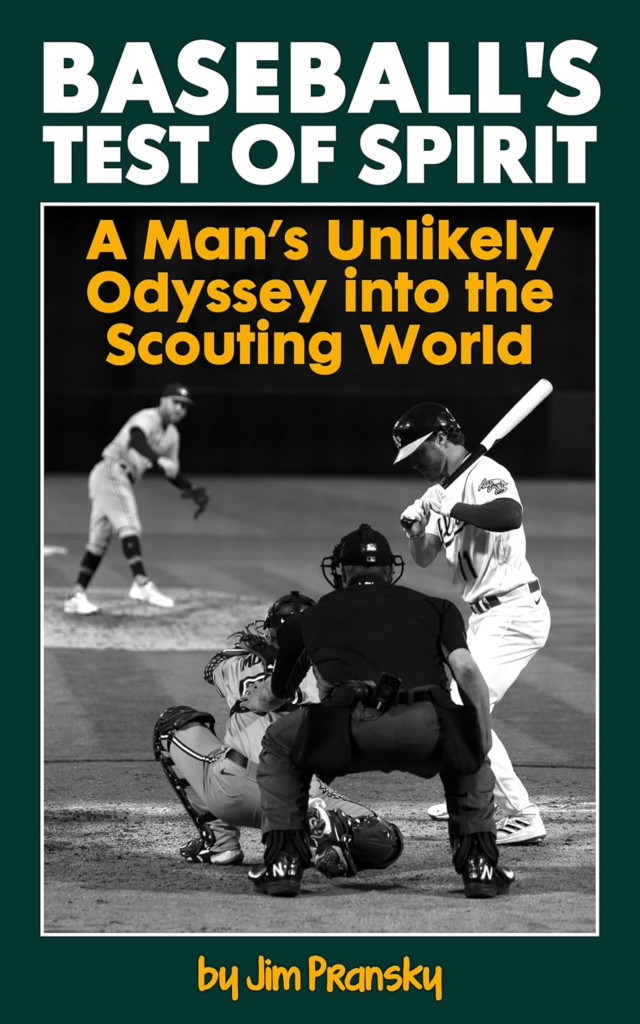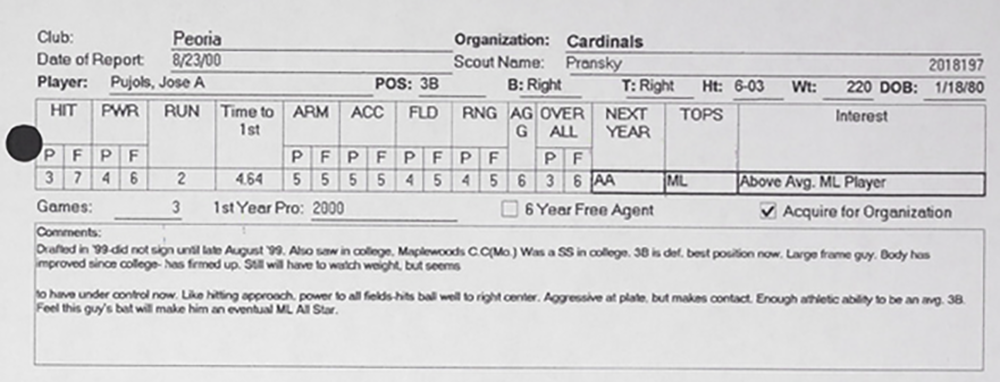Crim: Former QU baseball coach releases book on his quarter-century spent scouting for MLB teams

QUINCY — One book is out, another is on the way.
Former Quincy University baseball coach Jim Pransky has published a memoir based largely on the 25 years he spent as a scout for five Major League Baseball organizations.
In “Baseball’s Test of Spirit: A Man’s Unlikely Odyssey into the Scouting World,” Pransky writes about growing up in a small, rural town in Pennsylvania harboring dreams of a playing career that didn’t materialize, becoming a college coach in his 20s and eventually making it to the majors as a scout.
“It was supposed to be a two-year project, but they told me I had to put in all the bad stuff about me, too, so it took another year,” Pransky said.
The book, available in Kindle and paperback versions on Amazon, offers a behind-the-scenes look into the life of a full-time baseball scout, a close-knit fraternity that has dwindled to 1,000 or fewer today.
It provides intriguing baseball stories, scouting reports on players who made it big and those who didn’t, as well as life lessons Pransky learned from four decades of coaching and scouting. Baseball junkies will love it.
For St. Louis fans, there’s a chapter titled “How Did You Guys Miss Pujols?” Future Hall of Famer Albert Pujols wasn’t selected until the 13th round by the Cardinals in the 1999 MLB Draft, the 402nd pick overall, an obvious misjudgment in hindsight.
Pransky, then a pro scout for Oakland, was high on Pujols when he saw him play for Class A Peoria in 2000, the year before Pujols reached the majors and went on to become the unanimous choice for National League Rookie of the Year. He also had seen Pujols play in college.
His report from Peoria read, in part: “Like hitting approach, power to all fields — hits ball well to right center. Aggressive at plate but makes contact. … Feel this guy’s bat will make him an eventual ML All Star.”
No trade between the Cardinals and A’s involving Pujols materialized.

Pransky spent three seasons (1989-91) as QU’s first full-time baseball coach after stints at St. Bonaventure and George Washington.
He then moved into scouting, spending six years with the Houston Astros. It wasn’t always glamorous. Cellphones and the internet were not yet a thing and the Weather Channel was his guide to plotting scouting missions in the northeast while living on a $40 nightly motel allowance.
Driving hundreds of miles in a day was not uncommon for a free agent regional scout during the spring high school and college seasons, although Pransky boasts of receiving only two speeding tickets over 25 years and nearly a million miles driven.
He sheds light on the 1992 MLB draft, his first as a scout, when Houston owned the top pick. It was not thought to be a big-name draft. The Astros selected third baseman Phil Nevin from Cal State-Fullerton, passing — as four other teams also did — on high school shortstop Derek Jeter, a choice that hasn’t aged well.
Pransky followed that with eight seasons with the “Moneyball” Oakland A’s. Michael Lewis wrote a best-selling book and Brad Pitt later starred in a movie about the Billy Beane-led Oakland teams that used a sabermetric approach in the early 2000s to assemble a competitive team on a small budget.
“I was there pre-Moneyball, Moneyball and post-Moneyball. It was like being with three different A’s teams,” said Pransky, who devotes two chapters in his book to that era. “Michael Lewis’ book was not word for word. If you were there, you had a different take on some things.”
Pransky, who also had stints with the Cincinnati Reds and Colorado Rockies, was with Tampa Bay when the Rays reached the World Series in 2008.
“I went from a kid in a little town in Pennsylvania to watching the World Series from behind the dugout,” Pransky said.
Pransky, retired and living in Davenport, Iowa, has written 12 previous books, including one on former QU and MLB players Josh Rabe and Josh Kinney. He began work earlier this year on another he hopes to complete this fall about his first QU team in 1989.
Pransky was hired in early December 1988, seven months after Ron Clark resigned as coach and just three months before the 1989 season was set to begin. As I wrote in The Herald-Whig at the time, with no time to recruit, Pransky was forced to play the cards dealt him, and he didn’t draw many inside straights.
QU offered no scholarships then despite moving to NCAA Division II. The Hawks were coming off six consecutive losing seasons, posting a cumulative 63-165 record. Several players, unsure of the program’s direction because of the drawn-out coaching search, left.
“Now that it’s 35 years later, I can say everything, although I’m not going to say names,” Pransky said. “It’s not a bitter thing. This book is going to have a positive upswing to it. But what happened in ’89 can’t happen. For seven months there was nobody there.”
Pransky had just 19 players, 16 of them freshmen or sophomores. QU lost its first 25 games and was outscored 255-60 during that stretch. The Hawks lost 32-0 to Iowa after splitting a doubleheader with the Hawkeyes the spring before. QU finished with a 6-40 record, but the players stuck it out.
“It would have only taken a couple of guys to say they were having no fun and they’re not doing it anymore, and they leave, and it starts to roll. We could have had five games left and only nine or 10 players,” Pransky said.
“But they didn’t, and because of that the next year we come back and get 25 wins and the following year we get 25 wins. Then (Pat) Atwell takes over and it goes, (Josh) Rabe comes in and it goes, then the next guy comes in and it goes.”
QU has made 11 NCAA tournament appearances and endured just two losing seasons since 1989. Perhaps the players from that squad — Pransky calls it the “abandoned team” — helped lay a foundation for that success.
“I’m not saying we were the reason the program has grown, but it easily could have gone another way with a different makeup of personnel,” Pransky said.
Pransky has talked with surviving players from that team to get their recollections of the 1989 season. It’s as much their story as it is his.
“They went through it as 19-year-olds,” he said. “They’ve gone on to coach their own kids in Little League and are now seeing grandkids play. They have done remarkable things since graduating from Quincy. The doctors, the lawyers, the professors, none of them have said they wasted a year by playing ball (in 1989).
“They love talking about the good things, and I’m thankful for that. When you really take it apart individually, it really was a positive thing. It’s a great story.”
Miss Clipping Out Stories to Save for Later?
Click the Purchase Story button below to order a print of this story. We will print it for you on matte photo paper to keep forever.

